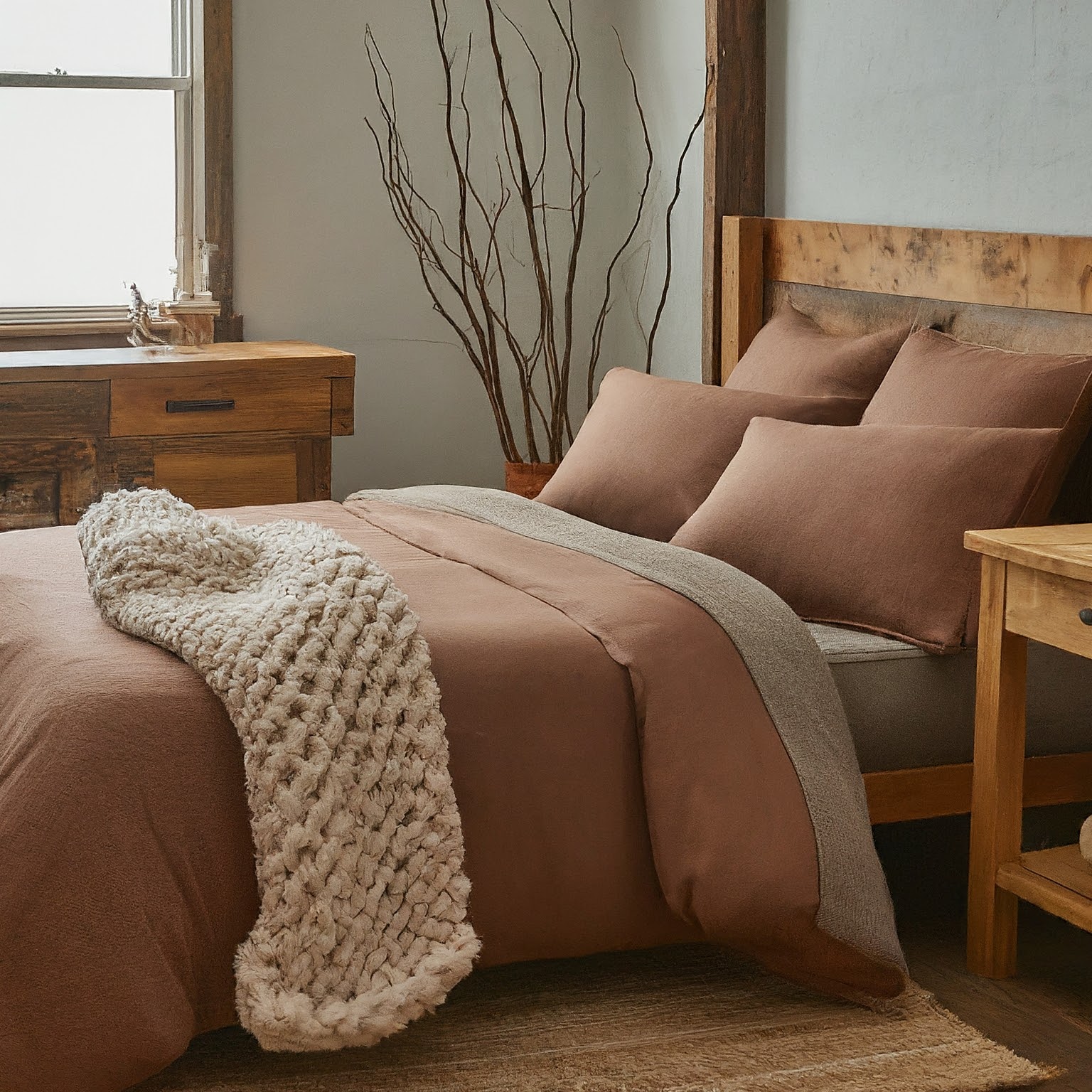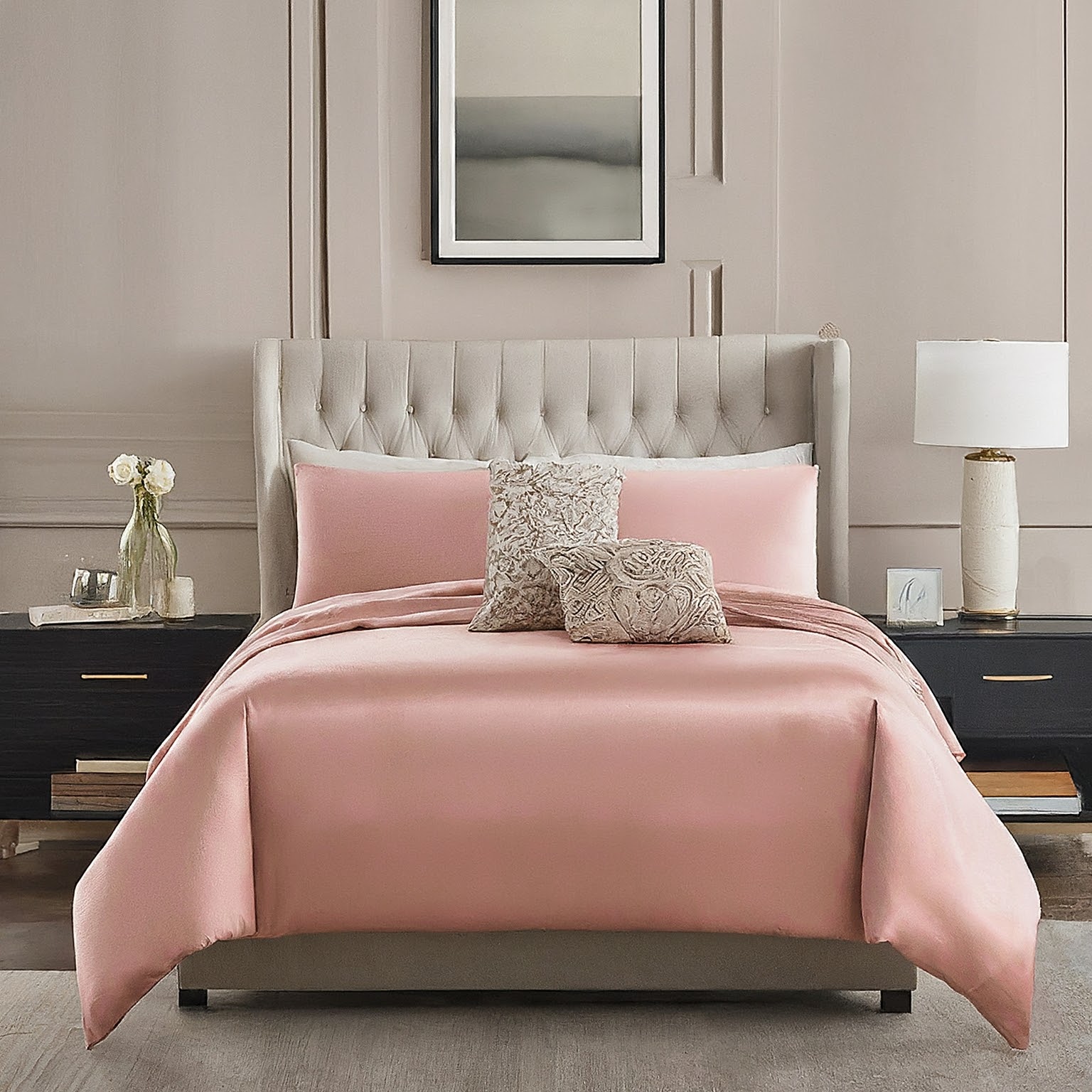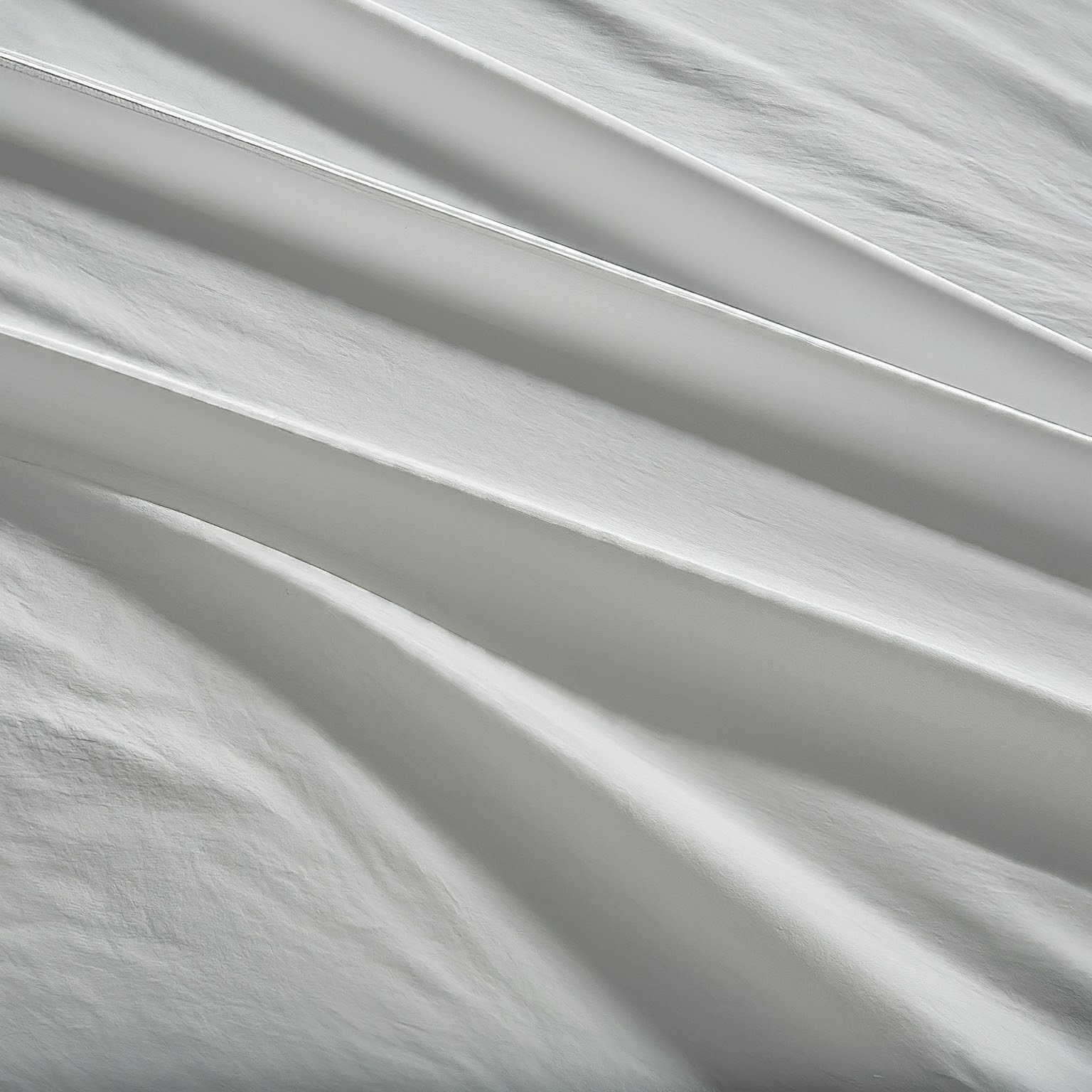We all know the feeling – sinking into a luxuriously soft bed sheet after a long day. But beyond pure comfort, the material of your bed sheets plays a significant role in your sleep quality and the overall ambiance of your bedroom. From temperature regulation to aesthetics, choosing the right bed sheet material can elevate your sleep experience and contribute to a stylish home decor scheme. The best bed sheet materials offer a perfect balance of softness, breathability, and durability. Whether you prefer crisp cotton, silky satin, or cozy flannel, each fabric brings its own unique benefits. Investing in quality bed sheets can transform your bedroom into a haven of relaxation.
What Best Bed Sheet Material Will Provide
Think of your bed sheets as an extension of your mattress. The material you choose can significantly impact several aspects of your sleep:
- Comfort: Softness, breathability, and texture all contribute to how comfortable you feel while nestled in your sheets.
- Temperature Regulation: Do you tend to sleep hot or cold? Certain materials wick away moisture or trap heat, impacting your body temperature throughout the night.
- Aesthetics: Bed sheets are a significant visual element in your bedroom. The material’s texture, color, and pattern can influence the overall style and mood of your space.
- Durability: Consider how often you wash your sheets and how well the material holds up over time.
Understanding Best Material for Bed Sheets:
The world of bed sheets offers a variety of natural and synthetic fibers, each with unique properties:
Natural Fibers: These materials are generally considered more breathable and comfortable.
- Cotton: A classic choice, known for its softness, breathability, and durability. Popular options include Egyptian cotton and Pima cotton, renowned for their extra-long fibers and luxurious feel. Thread count, which refers to the number of threads per square inch, is often associated with quality in cotton sheets. However, a higher thread count doesn’t always guarantee better quality. Look for a balance between thread count and weave type (discussed later). Cotton is most popular fabric for bedsheet.
Read More:
- Linen: Linen sheets are known for their natural cooling properties and crisp, slightly wrinkled texture. They become softer over time and are highly durable. However, linen can wrinkle more easily than cotton and might feel slightly rough to some sleepers.
- Flannel: Perfect for cozy winter nights, flannel sheets are brushed to create a soft, warm feel. They are ideal for cold sleepers but might feel too warm in summer months. Flannel sheets can also require more care than other materials.
- Silk: The epitome of luxury, silk sheets offer a smooth, cool feel and excellent temperature regulation. However, silk is a delicate material that requires special care and can be quite expensive.
Silk Curtains Pros and Cons: Is This Luxury Fabric Right for You?
- Synthetic Fibers: While less common, synthetic materials like polyester and microfiber can be an affordable option. However, they tend to be less breathable than natural fibers and might trap heat.
Out of these cotton and linen are most common and best bed sheet material used by masses.
Weave Types and Their Impact:
The weave type refers to how the threads are interlaced in the fabric, influencing the look and feel of your bed sheets:

- Percale: Percale sheets have a crisp, cool feel and a slightly matte finish. The weave allows for good airflow, making them a good choice for hot sleepers.
- Sateen: Sateen sheets have a smooth, luxurious feel with a slight sheen. They tend to be warmer than percale sheets due to the tighter weave.
- Flannel Weave: The specific weave used for flannel sheets creates a soft, napped texture that traps air for warmth.
Choosing the Best Material for Bed Sheets for Your Needs:
With so many options, selecting the perfect bed sheet material can feel overwhelming. Here are some factors to consider:

- Temperature Preference: Hot sleepers might benefit from breathable materials like percale cotton or linen. Cold sleepers can opt for flannel in the winter or Tencel (a type of lyocell fiber) for year-round comfort.
- Desired Softness/Crispness: Do you love the feeling of crisp, cool sheets against your skin? Percale cotton is a good choice. If you prefer a luxuriously soft feel, sateen or flannel might be more suitable.
- Allergy Concerns: Natural fibers like cotton and linen are hypoallergenic and a good choice for allergy sufferers.
- Ease of Care: Some materials, like linen, wrinkle easily but require minimal washing. Cotton and synthetic blends are generally easier to care for.
- Aesthetic Preferences: Consider the color palette and overall style of your bedroom. Linen sheets add a natural, understated elegance, while sateen can create a luxurious feel.
Read More:
Everything About Cotton Bedsheets Pros & Cons, and Care Tips
Microfiber vs Cotton Sheets: Which One is Right for You?
Matching Material to Sleep Style:
Here’s a quick guide to help you match bed sheet material to your sleep style:

- Hot Sleepers: Percale cotton, linen, Tencel
Material and Style Pairings for a Cohesive Bedroom Look:
Your bed sheets play a significant role in setting the tone for your bedroom’s ambiance. Here are some ideas to inspire your home decor:
- Coastal Vibe: Linen sheets in natural tones like white, beige, or light blue create a breezy and calming atmosphere. Pair them with woven baskets and seashell accents for a complete look.
- Modern Minimalist: Crisp percale cotton sheets in white or a bold geometric pattern complement a minimalist aesthetic. Opt for clean lines and uncluttered furniture to complete the look.
- Romantic Retreat: Luxurious sateen sheets in soft colors like blush pink or lavender create a romantic and inviting space. Add textured throw pillows and soft lighting for an extra touch of elegance.
- Rustic Charm: Flannel sheets in muted tones like brown or grey add warmth and coziness to a rustic bedroom. Layer them with a chunky knit throw and wooden furniture for a natural feel.
Best Bed Sheet Materials: Beyond the Basics
The Science of Sleep and How Bed Sheets Impact Your Rest:
Your choice of bed sheet material can influence various aspects of your sleep cycle. Breathable materials like cotton and linen allow for better airflow and moisture regulation, which can help you maintain a comfortable body temperature throughout the night. Conversely, materials that trap heat might disrupt your sleep cycle.
Creating a Calming Sleep Sanctuary with the Right Bed Sheets:
The right bed sheets can contribute to a sleep-conducive environment. Opt for materials known for their softness and breathability, such as linen or percale cotton. Consider incorporating calming colors like lavender or blue into your bed sheet selection.
The Psychology of Color in the Bedroom: Choosing Bed Sheets for Better Sleep:
Colors can have a significant psychological impact on our mood and sleep patterns. Here’s a brief guide:
- Cool Colors: Blues, greens, and lavenders promote feelings of calmness and relaxation.
- Warm Colors: Reds, oranges, and yellows can be energizing and might not be ideal for a sleep sanctuary.
- Neutral Colors: Whites, beiges, and greys offer a timeless and serene backdrop for your bedroom.
Sustainable Bed Sheet Options:
With growing awareness of environmental impact, consider exploring sustainable bed sheet options. Organic cotton, linen, and Tencel are all eco-friendly choices. Additionally, look for brands committed to fair trade practices and ethical production.
Caring for Bed Sheets Based on Material:
- Cotton: Machine washable, follow care instructions on the label.
- Linen: Machine washable on a gentle cycle, air dry or tumble dry on low heat.
- Flannel: Machine washable on a gentle cycle, tumble dry on low heat.
- Silk: Delicate, hand wash or dry clean according to care instructions.
Frequently asked Questions
1. What is the ideal thread count for bed sheets?
Thread count refers to the number of threads per square inch. A higher count, like 300-600, usually indicates softer sheets, but quality depends on the material too. Cotton with a thread count between 200 and 400 offers a good balance of softness and durability.
2. How often should I wash my bed sheets?
It’s recommended to wash bed sheets every one to two weeks. If you sweat heavily or have allergies, washing them weekly is ideal. Regular washing keeps sheets clean and fresh, enhancing comfort and hygiene.
3. Are higher thread counts always better?
Not necessarily. While a higher thread count may seem softer, it’s important to consider the quality of the cotton and the weave. A lower thread count of high-quality cotton can be just as comfortable as higher thread count sheets.
4. What is the difference between percale and sateen sheets?
Percale sheets have a crisp, cool feel with a matte finish, ideal for warmer climates. Sateen sheets are smoother, softer, and have a slight sheen, offering warmth and a luxurious feel, which makes them better suited for cooler environments.
5. Can I mix different bed sheet materials?
It’s generally better to avoid mixing materials as each fabric has different care requirements and feels. Using a single type of material ensures consistent comfort, softness, and durability for a better night’s sleep.
6. Are bamboo sheets better than cotton?
Bamboo sheets are incredibly soft, breathable, and eco-friendly, often more cooling than cotton. However, cotton sheets are more durable and versatile. Your choice depends on your priorities—comfort, sustainability, or long-term durability.
7. How do I prevent my sheets from wrinkling?
To prevent wrinkles, remove your sheets from the dryer promptly and fold them as soon as they’re dry. For minimal wrinkles, choose wrinkle-resistant fabrics or cotton blends that are less prone to creasing.
8. Are silk sheets worth the investment?
Silk sheets are luxurious, cool, and gentle on skin, but they require delicate care and are expensive. If you’re willing to handle them with care, they’re worth the investment for a lavish and comfortable sleep experience.
9. What are the benefits of linen sheets?
Linen sheets are breathable, durable, and improve with age. They have a naturally cool feel, making them ideal for hot sleepers. However, they tend to wrinkle more easily and may feel rough at first, but they soften over time.
10. How do I choose the right bed sheet material for my needs?
Consider your sleeping preferences: for warmth, flannel or sateen are great choices; for coolness, percale or linen work best. Think about your climate, softness, and how easy the fabric is to care for to make the right choice.
Conclusion:
Choosing the perfect bed sheet material involves a blend of personal preference, sleep style, and home decor aesthetic. By understanding the unique properties of different materials and weave types, you can create a sleep haven that promotes both comfort and style. Experiment with different options to find what works best for you, and enjoy a blissful night’s sleep wrapped in the perfect sheets.
Call to Action:
Do you have any questions about choosing the right bed sheet material? Share your sleep style and desired aesthetics in the comments below, and I’d be happy to offer personalized recommendations!




3 thoughts on “Best Material for Bed Sheets: The Ultimate Guide”